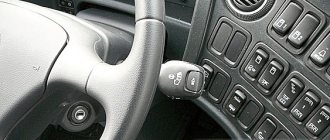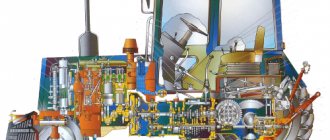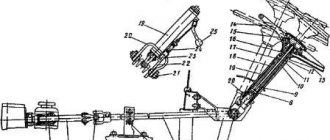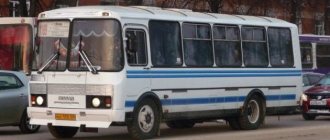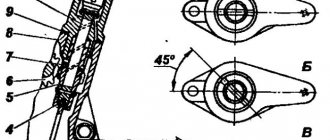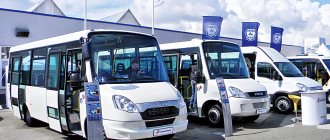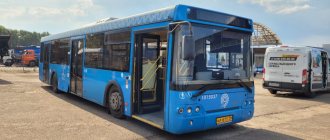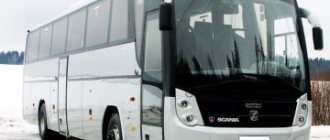When buying tickets, regulars of bus tours first of all pay attention to the location of the seats. Why is it important? Let's explain with an example.
Imagine that you have been planning your trip for a long time, thought through the route, and chose what you thought was a good place - with an excellent view, in the middle of the bus, not far from the door. And then it turned out that it was almost the only one that did not fold out. Everything would be fine, but only when the passengers in front reclined their seats did you find yourself squeezed on both sides. As a result, what was dreamed of as a wonderful journey turned into torture.
We will tell you in the article about all the nuances that you need to take into account when choosing a seat on the bus in order to avoid getting into a similar situation.
Long distance buses - good and different
If you think that knowing the seat number is enough to understand how comfortable it is, you are deeply mistaken. The fleet of modern long-distance buses (LDBs) is so diverse that until you see the layout of the interior, it is premature to draw conclusions.
For example, you got seat number 14. In a tourist MAN with 59 seats, this is the beginning of the cabin, 4th row; but in the cabin of the same model with 45 seats, seat No. 14 is located in front of the door and, most likely, does not recline. In a 20-seater Mercedes, the same number 14 is located on the left by the window at the end of the cabin, and in a 45-seater it is on the right by the aisle, 4th row. And a lot of such examples can be given.
Even the typical diagram of a specific model is not always accurate, since the carrier has the right to make design changes - add a bathroom, a kitchen, remove some of the seats (for example, the back row), and equip a sleeping or cargo compartment.
Site selection criteria
As we know, there is no dispute about tastes, so everyone may have their own criteria for choosing a convenient place. Experienced tourists recommend first of all taking into account such parameters as:
- safety;
- arrangement of seats in relation to the door;
- cabin segment (beginning, middle, end).
Let's look at them in more detail.
Dangerous and safe
Reports of road incidents involving ADF appear with alarming frequency, making it every traveller's No. 1 priority to reach their destination in one piece.
What places are potentially dangerous?
- First row, especially to the right of the aisle. In a head-on collision, they are the first to be hit.
- The last row may be damaged if the impact comes from behind. In addition, during sudden braking, rear row passengers have a higher risk of injury by flying into the aisle.
- Armchairs by the window on the left side of the cabin. We drive on the right side, so this side of the bus is always turned towards the flow of traffic.
The safest seats on a long-distance bus are as follows.
- In the middle of the cabin on the right side. But even in this relatively safe zone, it is better to sit not by the window, but near the aisle.
- The seats are immediately behind the driver. It is believed that the driver, instinctively avoiding danger, removes this zone from the impact, and, on the contrary, exposes the right side.
“Insidious” – next to the door
Places located in close proximity to the door are especially “tricky”.
If they are behind it, in winter and autumn, this is a zone of cold air currents that hit passengers every time the door opens. By the way, in summer the influx of fresh air can rather be considered a plus.
If the seats are on the right side in front of the door in the middle of the cabin, they do not recline. This is designed so as not to interfere with people getting off at stops. Typically, such seats are cheaper, but passengers do not always fully understand the reason for the bonus.
The area next to the door is not without its merits. You will be the first to get off the bus at the parking lot, which means you will get to the buffet, toilet, or just have time to smoke faster.
Disadvantages of the back rows
Few people like the last row in the ADF. And there is good reason for this.
- It shakes more violently here, and people with seasickness get seasick.
- The backs of the seats do not recline, which means there is no opportunity to relax or take a nap.
- If you use a general air conditioner rather than a climate control system to cool the air, it blows strongly from behind.
- If there is only one TV, you cannot see or hear it from the back row. The same goes for a guide during an excursion.
Some tour operators usually sell two tickets for the last row of 5 seats. Then their owners will have the opportunity not only to sit down, but also to lie down fully.
Features of choosing a seat on a double-decker bus
A travel agency may offer you a trip on a double-decker bus. This vehicle has a different seat layout and its own characteristics.
To decide which is best for you, study the pros and cons of each floor.
Advantages of the first floor:
- spacious interior;
- there are fewer people than at the top;
- comfortable tables;
- Nearby there is a bathroom, kitchen, water cooler, refrigerator.
Of the minuses
The cabin is located low in relation to the road, so you won’t be able to admire the panoramic views.
Be prepared for drivers to continue chatting in the evening, and perhaps listen to music or watch a movie.
Advantages of the second floor
- magnificent panoramic view;
- Quiet in the evening, because the drivers are below.
There are also disadvantages
It is more cramped here than on the first floor, which will be especially felt by tall and obese passengers.
Be prepared to descend each time to use the facilities or during stops. The second floor is not for people with disabilities.
And instead of a conclusion. Having chosen a place you like, make sure that it is officially indicated in the voucher (everything is clear with the ticket), otherwise it will turn out like in that joke - whoever gets up first gets the slippers.
A long-distance bus is a highly comfortable vehicle that transports passengers over long distances.
Differences between long-distance buses and city and suburban buses
The long-distance bus has a number of features:
Long travel times and rare stops; — you can transport a large amount of luggage in a special compartment under the floor; there are shelves in the cabin for hand luggage; — no standing places; — the seats are equipped with soft armrests, the passenger can take a semi-lying position thanks to the tilt-adjustable backrest, and a small folding table with a cup holder is often built into the back of the seat; — each seat has individual lighting lamps and ventilation curtains; — the bus can be equipped with a chemical toilet, water dispenser, refrigerator, microwave, small bar, wardrobe, air conditioning, sometimes even a shower.
Safe and dangerous places on the bus
If the bus is equipped with a reliable system with advanced security or not, the passengers are trying to choose the right place in the bus so far the road was very safe and not particularly tedious.
You shouldn’t choose the very last seats on the bus, because that’s where a lot of the smoke gets in. After sitting in the back seats for 3-4 hours, you can get serious poisoning of the body from exhaust gases, and you also get very motion sick there. And if the bus suddenly brakes or there is an accident, you can easily jump out of your seat and fly into the aisle and get injured.
It is not advisable to occupy the first row of seats located next to the door. If you paid attention to the windshields of regular buses, there are practically none intact.
The windshield often get small stones, and in rare cases they can flash through it and injure a passenger.
The safest seats on a long-distance bus are considered to be the seats in the center of the cabin, since in the event of an accident, collisions are often head-on, or the impact occurs in the rear of the car. Those seats that are located on the right side of the cabin, near the aisle, are also safe - they are located further than others from oncoming traffic.
Well, the opinion of almost all drivers is the same - the safest place is located behind the driver’s seat, because in an unforeseen situation a person will intuitively save himself first.
In modern bus fleets you can find a huge number of modifications of buses, differing not only in the number of seats, but also in their layout in the cabin. There is no single scheme common to all manufacturers. And not only manufacturing companies, but also the carriers themselves can re-equip the cabin at their discretion. Therefore, even equipment of the same brand and year of manufacture may have a different number of seats and their numbering.
The only requirement for such actions is not to violate established safety rules.
You can see the most common seating arrangements in long-distance buses in the photo:
Paz 4234 number of seats
Refers to high-floor types of bus transport. The so-called “carriage type” frame is located on the supporting frame. There are not so many differences from other standard models:
- Two doors.
- The body is extended by 1 meter. The PAZ-4234-05 model can also boast of it.
The remaining details of the design are easy to recognize. In 2007, the design of the model was changed once. 27 centimeters is the height typical for ground clearance. Thanks to this, you can use the car in different weather conditions, even if the quality of the road surface leaves much to be desired. The length of the body will ensure a stable position of the car.
Bus PAZ 4234
The capacity of the bus was increased due to an increase in body dimensions. The total number of seats is now 30. The maximum passenger capacity is 50 people. Modernization in 2007 contributed to increased comfort for those inside. This also applies to the PAZ-4234-04 version.
The main nodes will be like this:
- Suspension with rigid springs.
- Mechanism with steering wheel supported by hydraulic booster.
- Brake system with two circuits, pneumatic. Axial separation along the contours is present at the drive. Classic brake drums.
- Five-speed manual transmission.
MMZ D-245 is the only engine that was originally installed on the bus. But over time, modifications appeared that allowed other options for technical characteristics. The model with the YaMZ-534 engine has increased power. But the price of transport in this case also increases.
Aggregate characteristics of PAZ 4234
| Body type | Load-bearing, all-metal, carriage-type |
| Wheel formula | 4x2 |
| Body resource | 5 |
| Length Width Height | 8165/2530/28902960 |
| Ceiling height in the cabin, mm | 1965 |
| Base | 4345 |
| Number/width of doors | 2/726 |
| Min. turning radius, m | 9,3 |
| Curb/full weight, kg | 6445/9995 6640/9895 |
| Load on front/rear axle, kg | 3890/6105 3680/6215 |
| Total number of seats (including landing seats) | 50(30 1) 45(27 1) |
| Volume of luggage compartments, m3 | 1.5 (for intercity model) |
| Fuel tank capacity, l | 105 |
| Chassis, bridge | KAAZ or RZAA |
| Steering gear | Power steering |
| Brake system | The service brake is a pneumatic double-circuit drive divided into circuits along the axes, the brake mechanisms of all wheels are drum, ABS. Parking brake - brake mechanisms of the rear wheels are driven by spring energy accumulators. Emergency brake - each circuit of the service brake system. Brake Retardation System - Engine Brake |
| Ventilation | Natural |
| Heating system | Liquid heater and cabin heaters |
| Tires | 245/70R19.5” (for class I-II); 8.25R20” (240R508) (for class II) |
| Engine (diesel/gas) | MMZ D-245.9E2(MMZ D-245.9E3) | Cummins ISF3.8s3168 | YaMZ-534 |
| Number and arrangement of cylinders | 4R | 4R | 4R |
| Environmental safety standards E | EURO-3 | EURO-3.4 | EURO-4 |
| Working volume, l | 4,75 | 3,76 | 4,43 |
| Engine power, kW (hp) | 95.7 at 2500 min-1 (96.7 at 2400 min-1) | 122 (168) at 2600 min-1 | 110(150) at 2500 min-1 |
| Max. torque, Nm | 446 at 1500 min-1 (451.1 at 1600 min-1) | 592 at 13001700 min-1 | 580 at 1700 min-1 |
| Location | Anterior, longitudinal | Anterior, longitudinal | Anterior, longitudinal |
| Maximum speed, km/h | 80 (for class I-II); 95 (for class II) | 80 (for class I-II); 95 (for class II) | 80 (for class I-II); 95 (for class II) |
| checkpoint | SAAZ 3206, SAAZ 136 | ZF S5-42 | ZF S5-42 |
The body has a service life of 6-8 years. For painting, durable compounds are used that can withstand almost any weather conditions. There are other parameters that deserve special attention. The price practically does not depend on them:
- The body height in the cabin is 1965 mm.
- The total figure for the body will be 2940 mm.
- Fuel tank with a capacity of 105 liters.
- 18.4 liters of diesel fuel are consumed per 100 kilometers when it is partial. Full leads to an increase in costs to 23-24 liters.
136 horses or 100 - kAT - the power plant produces such power. This type of bus is capable of reaching a total speed of up to 95 kilometers per hour. The fuse diagram will make it easy to understand any problem.
The model also comes with a part such as an engine pre-heater. The cooling system is liquid type. The manufacturer does not recommend using water for this part, otherwise corrosion will occur and the structure will fail prematurely. It's easy to find photos confirming damage.
Bus interior
Transport reliability
The design is equipped with additional filters that perform double cleaning. The controllability of the vehicle is improved thanks to the presence of power steering. There is also a heater radiator, but it is used separately from this system.
There are two main components in the braking system:
The operating principle of this system is pneumatic. The working part has two circuits, one for each of the working axes. This makes it easy to reset the speed if necessary. Even a complete stop in a few seconds does not cause any particular problems. The parking part is equipped with cameras, supplemented with springs and energy accumulators.
The anti-lock braking system ABS is required for all types of buses. Thanks to this, control will not be lost, even during emergency braking. The grip also remains reliable. The transport is maneuverable, which is especially convenient when traveling on city roads. The requirements of the Euro 4 standard are met by the latest modifications without problems. Brake linings make it easy to control in all conditions.
In the case of transporting children, models are equipped with spare emergency doors. 5 heating devices are responsible for heating the interior in winter. The height of the driver's seat is adjustable.
THIS IS INTERESTING: Bus Liaz 677
In operation and repair, the vehicle will not cause problems for the owners. A large number of parts remain accessible, which makes it easier to repair and replace faulty units. It is recommended to search for parts for specific modifications as technology continues to improve. Selection and ordering of units will be easier if you use special catalogs.
Motor PAZ 4234
Equipment price
Buses can be found both new and used. New modifications are also being produced that comply with the latest versions of the standard. Two million rubles is the average price of a vehicle that has just rolled off the assembly line. Used cars are cheaper, even if they have a steering knuckle, for example.
New buses are always covered by a manufacturer's warranty. It is usually expressed in the form of a time interval or a specific mileage. Standard values are from one and a half to two years. Mileage - from 50 to 75 thousand kilometers. For MMZ series engines, the warranty lasts less; it increases in the case of owners of Cummins series engines.
conclusions
The following advantages made the equipment in demand for Russian territories:
- Quick profit at affordable prices.
- Reliable suspension, road conditions do not affect this.
- Spare parts that are easy to obtain and repairable. Even an air filter is not difficult to get.
- Trouble-free operation on any route.
- Improving the technical characteristics that the interior also has.
Among owners of domestic models, PAZ 4234 is one of the most popular brands. Reliability and simplicity of design largely contribute to the choice. I am also pleased with the minimum downtime for repairs if necessary. Thanks to this combination of parameters, the payback is really fast.
Source: https://avtobuspaz3205.ru/4234-kolichestvo-posadochnykh-mest/
Location of seats in various modifications of PAZ buses
The total capacity of the PAZ-32053 modification is 41 passengers, seating capacity is 25. The numbering in the cabin is very confusing. The first three seats, located to the right of the driver and facing the passenger compartment, have numbers 23, 24, 25. Next on the left are numbers 5 and 6, located parallel to the axis of the cabin, and only after them on the left side are seats 1, 2, 3, 4. The right row starts with numbers 21, 22. Other options are possible.
The PAZ 4234 model belongs to the small class bus equipment. It has 25 seats and an additional 18 passengers can ride standing.
The photo of the layout of the seats inside the bus shows that all seats, except the rear one on the right, are located in the direction of travel of the car. In the modification, which has 30 passenger seats, there are three combined seats in front facing the interior of the cabin. In the latter case, the numbers of the first three seats are 30, 1, 2. Seats 3 and 4 are located in the row on the left. Further, all numbers follow in order.
In the VECTOR NEXT groove, depending on the purpose (urban/suburban), several options for completing the internal space are provided.
Seats can be 17, 21, 25.
Story
It was developed by creating dozens of prototypes over almost 15 years. The first experimental batch of buses for testing was manufactured in 1979, and assembly line assembly began in 1984. The final version of the bus was approved in 1986. Mass production began on December 1, 1989, when the assembly line completely stopped production of the previous PAZ-672M model. On June 4, 2001, the plant celebrated the production of the 100,000th bus of this model. In 2008, production was modernized, which made it possible to carry out certification for regular use on busy routes, the service life of the body increased significantly (from 5 to 10 years), a more efficient heater and more comfortable seats were installed in the cabin. In 2014, production of the restyled version began.
Seat layouts for KAvZ buses
KAvZ brand buses belong to the middle class equipment used on suburban and intercity routes. The number of passenger seats is 31, the total capacity is 54 people.
All seats are located along the direction of the cabin. The numbers start from the first row, on the right side, with the seat located near the aisle.
The KAvZ 4238 equipment has, depending on the modification, 34, 35 or 39 seats. Numbering is standard. Models are used for suburban and intercity routes, as well as school cars.
Equipment price
Buses can be found both new and used. New modifications are also being produced that comply with the latest versions of the standard. Two million rubles is the average price of a vehicle that has just rolled off the assembly line. Used cars are cheaper, even if they have a steering knuckle, for example.
New buses are always covered by a manufacturer's warranty. It is usually expressed in the form of a time interval or a specific mileage. Standard values are from one and a half to two years. Mileage - from 50 to 75 thousand kilometers. For MMZ series engines, the warranty lasts less; it increases in the case of owners of Cummins series engines.
Seat arrangement options for Hyundai buses
Hyundai Universe large-capacity tourist buses have 43 or 47 passenger seats, separated from the driver's seat by a solid partition. There is a guide chair to the right of the driver. The numbers start from the left seat of the first row.
You can choose a passenger bus for city, suburban, intercity routes with the required interior layout. Most models are in stock.
Bus tours are very popular today, and more and more people prefer the romance of traveling in comfortable long-distance buses to air travel. This type of transport has a number of features compared to the usual city buses and minibuses. First of all, tourist buses are equipped with comfortable soft seats with armrests. In addition, the ADS has the ability to transport oversized cargo; for this purpose, there are special compartments under the floor and shelves located in the cabin. There are also buses equipped with chemical toilets, water dispensers, refrigerators and much more.
All these factors must be taken into account if you are planning a long bus trip. And of course, you need to choose the optimal and safest location in the ADS, especially considering that the seat is “assigned” to the passenger until the end of the trip and cannot be changed. Based on this, it will be useful to know the location of the seats on the bus, the layout of which may differ. And think: maybe you should inquire about the availability of free seats on a long-distance train so that the trip brings only positive emotions.
Location of seats on buses
In the bus fleets of travel companies you can find a huge number of a wide variety of regular buses, differing in modification. A unified numbering of seats on a long-distance bus, the scheme of which would be the only one, has not yet been invented and today different carriers have the right to equip ADS at their own discretion. Moreover, even buses of the same brand, same year of manufacture and upholstery color can have a different number of seats. Therefore, to the question “How many seats are there on the bus?” We can only give an approximate answer.
For example, if we take a MAN tourist bus, the layout of seats on it may differ significantly. In a standard model there will be 59 of them, with the numbering starting from the first right seat. And if you drive a MAN Lion's Coach R 08, designed for 49 passengers, then the first seat will be in the second row on the right. The front two seats will have numbers 46 and 47. As you can see, even the brand of ADS depends on where you will sit.
The same applies to other brands of buses. For example, in a small standard Mercedes 22360C there are 20 seats, and they are numbered generally chaotically, namely: two seats located next to the driver are numbered 19 and 20, behind the bus driver there are 1 and 2 seats, and then the numbering of seats on the bus goes to the right - left. But, if you transfer to a Mercedes-Benz 0303, designed for 45 passengers, then the seats will be numbered from left to right.
As you can see, the layout of seats on long-distance buses may differ depending on the ADS model. But this is not the only nuance; the carrier can also make design changes by adding service space, a dry closet and much more. In this case, the scheme will undergo changes again.
Therefore, before purchasing a ticket, it would be a good idea to check with a specific carrier about the location of the seats.
Let us give as an example several seat layouts for buses most commonly used in Russia.
The presented diagrams are taken from the website of the State Unitary Enterprise SO "Sverdlovsk Regional Association of Passenger Motor Transport". On this same site you can find diagrams of other buses.
But in addition to your convenience, you also need to take into account safety; the choice of the right place also depends on this parameter.
Where is the safest place to sit on a long-distance bus?
Since news reports are full of accidents involving tourist buses, you should carefully choose the area in which you plan to sit.
In order to choose the safest seats on a long-distance bus, you must consider the following recommendations:
- As when driving a car, the safest place is considered to be the seat located immediately behind the driver's seat. This is explained by the fact that in an unforeseen situation the driver, on a subconscious level, tries to evade danger in order to protect his life. Accordingly, the opposite side of the vehicle most often comes under attack.
- The best seats on a long-distance bus are located in the center of the cabin. In the event of a head-on collision or impact that may occur at the rear of the bus, this area will remain the most undamaged.
- After finding out from the carrier how the seats on the bus are located, try to give preference to the seats installed on the right side of the cabin (near the aisle).
This applies to preferred zones in a vehicle. But recommendations about the most dangerous chairs will be no less useful.
Where is it better not to take the bus?
There are places in the ADS that experienced tourists prefer to avoid, namely:
- Last seats. A lot of fumes accumulate in this area, and after just a few hours of driving like this, you risk getting poisoned by exhaust fumes. In addition, in the back of the bus you get more motion sickness, and with sharp braking the ADS can fly into the aisle.
- First row (near the door or driver). In a frontal collision, this area is most often affected, so even despite good visibility, it is better to avoid this arrangement.
When communicating with your travel agent, make sure the seats do not recline. Decent carriers prefer not to sell tickets for such seats at all, using them for other purposes, but there are those who will not miss the profit. Usually such places are located at the end of the ADS, as well as before the exit in the middle of the cabin.
Take into account the time of year in which you are planning your tourist trip. In winter, it is better not to sit immediately outside the exit, so as not to suffer from cold air currents. And if you prefer to get off first at stops to drink hot tea, then it is better to sit down before the exit. This is usually the warmest place.
In custody
As you can see, the seat arrangement on a long-distance bus is very important, but to find out the exact layout, it is best to go to the travel agent's office and ask for a detailed seat plan. Be careful when buying the cheapest tickets, as they are often sold to the most inconvenient and unsafe seats.
kratko-obo-vsem.ru
Equipment for the Mercedes Sprinter passenger car
| 1 | Full body glazing (glued glass). |
| 2 | Thermal and noise insulation of ceilings, floors, doors, walls. |
| 3 | Ventilation emergency metal hatch. |
| 4 | Interior lighting. |
| 5 | Passenger seats with high backrest (upholstery in ruffled fabric) with seat belts. |
| 6 | Interior decoration: plastic composite panels. |
| 7 | Interior heater of antifreeze type, 8 kW with flow distribution to 3 deflectors. |
| 8 | Plywood flooring + anti-slip floor covering. |
| 9 | Rear door locking device. |
| 10 | Interior handrails. |
| 11 | Side stand. |
| 12 | Exhaust system. |
| 13 | Emergency hammers (2 pieces). |
| 14 | The electric sliding door drive is rack and pinion. |
Car interior diagram
Depending on the vehicles that are used for conversion into vehicles for transporting passengers, the InvestAvto special vehicles plant offers the following interior layout options.
Note:
The number of seats is the seats in the cabin + the seats next to the driver (in the cabin) + the driver's seat. Seat dimensions:
Length: 540 mm Width: 410 mm Depth: 410 mm
Foreign cars
Options for car interior layout for transporting passengers on a L4 length base (long wheelbase with an increased rear overhang).
Mercedes Sprinter base car
| Smoothly adjustable heating and ventilation system with 4-stage fan control and two additional fan settings. deflectors to distribute fresh air |
| Easy loading thanks to rear hinged doors with an opening angle of up to 180° |
| Driver's seat with a wide range of adjustments for optimal positioning |
| Steering with rack and pinion mechanism and hydraulic booster |
| Central locking with remote control |
| 16-inch tires size 235/65 R 16 (for the 3.5 t GVW version) |
| Two-way adjustable headrests with fabric upholstery on all seats |
| ADAPTIVE ESP® incl. ABS, Traction Control (ASR), Electronic Brakeforce Distribution (EBV) and Brake Assist System (BAS) |
| Adaptive brake lights |
| Airbag (driver) |
| Recoil system for cars with automatic transmission |
| Three-point seat belts in all seats, for the driver's seat and single front passenger seat - with pretensioners and limiters |
| Independent front wheel suspension |
| Burnt out lamp warning system |
| Front suspension stabilizer (for the 3.0 t version - as an option) |
| Adjusting the headlight range |
| Laminated safety windshield |
| Number of cylinders | 6 | 4 | 4 |
| Cylinder arrangement | V 72° | in-line | in-line |
| Number of valves | 4 | 4 | 4 |
| Working volume (cm3) | 2.987 | 2.148 | 1.796 |
| Power (kW/hp) at rpm. | 135/184 at 3800 | 65/88 at 3800 | 115/156 at 5000 |
| Rated Torque (Nm) | 400 | 220 | 240 |
| Cargo space volume, (m3) | 11,5 | 15,5 | |
| Type of fuel | diesel | diesel | super class gasoline |
| Tank capacity (l) | ok 75 | ok 75 | approx 100 |
| Fuel system | microprocessor direct injection system with common rail power supply system, turbocharging and charge air cooling | microprocessor injection | |
| Battery (V/Ah) | 12/ 100 | 12/ 74 | 12/ 74 |
| Generator (V/A) | 14/ 180 | 14/ 90 | 14/ 150 |
| Drive unit | rear 4x2, full 4x4 | rear 4x2 | rear 4x2 |
www.autozavod.com
Technical characteristics of PAZ-3205:
| Manufacturing plant | GROOVE |
| Produced, years | 1989–present |
| Instances | more than 100,000 |
| Gross weight, t | 7.610 |
| Curb weight, t | 5.610 |
| Max. speed, km/h | 90 |
| Bus class | high-field small |
| ECO standard | Euro 2 |
| Capacity, persons | |
| Seating | 25 |
| Nominal capacity (5 people/m2) | 36 |
| Full capacity (8 people/m2) | 41 |
| Dimensions | |
| Length, mm | 6 925 |
| Width, mm | 2 530 |
| Roof height, mm | 2 880 |
| Base, mm | 3 600 |
| Clearance, mm | 264 |
| Engine | |
| Engine model | ZMZ-672.11 |
| Supply system | carburetor |
| Fuel type | gasoline, diesel |
| Number of cylinders | 8 |
| Cylinder arrangement | V-shaped |
| Power, hp | 130 |
| Torque, Nm | 314 |
| Volume, cm3 | 4250 |
| Fuel consumption at 60 km/h, l/100 km | 25 |
| Transmission | |
| Gearbox model | GAZ-3307 |
| Gearbox type | mechanical |
| Number of gears | 4-5 |
Based on site materials: wikipedia
See also:
- Volkswagen New Beetle
- Opel Ascona A
- Daewoo Lanos
- History of the road sign
- BMW E65-E66
- Airless tires
- BMW Z8
Layout and numbering of seats on buses
This section presents typical layouts and numbering of seats on buses. On individual buses, the actual location and numbering of seats may vary depending on the modification.
Select the brand of bus Andare Daewoo Fiat Ford Golden Dragon Hyger Hyundai Isuzu Bogdan Iveco Carosa Kia Man Mercedes Neoplan Peugeot Scania Setra Shenlog Sang Yong Volvo Yutong GAZ Ikarus KaVZ LAZ LIAZ Nefaz PAZ Miscellaneous
ANDARE 850
Total capacity: 47
Seating: 47
DAEWOO BH 120
Total capacity: 37
Seating: 37
DAEWOO BS 106
Total capacity: 43
Seating: 43
FIAT DUCATO
Total capacity: 18
Seating: 18
FIAT DUCATO BUS
Total capacity: 14
Seating: 14
FORD 222700 Transit
Total capacity: 16
Seating: 16
FORD 222702
Total capacity: 18
Seating: 18
GOLDEN DRAGON
Total capacity: 29
Seating: 29
GOLDEN DRAGON
Total capacity: 43
Seating: 43
GOLDEN DRAGON
Total capacity: 50
Seating: 50
HIGER KING-LONG
Total capacity: 35
Seating: 35
HIGER KLQ 6109Q
Total capacity: 41
Seating: 41
HIGER
Total capacity: 23
Seating: 23
HYUNDAI AERO SPACE
Total capacity: 43
Seating: 43
HYUNDAI UNIVERSE
Total capacity: 45
Seating: 45
HYUNDAI AERO TOWN
Total capacity: 33
Seating: 33
HYUNDAI COUNTY
Total capacity: 18
Seating: 18
Isuzu Bogdan A 09214
Total capacity: 26
Seating: 26
Isuzu Bogdan A 09212
Total capacity: 35
Seating: 27
Iveco 211GS-15
Total capacity: 20
Seating: 20
Karosa C934.1351
Total capacity: 43
Seating: 43
Karosa C956.1074
Total capacity: 49
Seating: 49
www.autovokzal.org
Bus Gazelle Next | GAZelle NEXT club
The Gazelle Next minibus based on an all-metal van is designed to accommodate 16 seats. The new generation of Next buses is maximally adapted to ensure that passengers experience comfort and complete safety.
The bus is designed for increased convenience when entering and exiting the cabin; for this, the manufacturers laid down several points:
- the salon is equipped with a high ceiling of 1.90 m;
- high side door;
- there is a low step at the entrance;
- ergonomically located seats with seat belts;
- LED lighting;
- panoramic glazing system.
In summer, the temperature in the cabin is maintained by air conditioning, and in winter by a heating system of 3 units. The power elements of the car in the body, which may be subject to deformation during transportation, were equipped with increased rigidity. The body of the Next bus is galvanized steel, some elements were replaced with high-strength plastic. Thanks to these materials, Gazelle is protected from corrosion and functionality is increased.
The Next generation of Gazelles has been improved with new technologies, which have a positive effect during operation:
- use of Atsumitec Toyota Tsusho remote drive;
- 80-liter plastic fuel tank;
- The rear suspension was equipped with Mango shock absorbers and updated springs;
- The frame is equipped with upper and lower reinforcements.
Updating and introducing new technologies allows the Gazelle Next to drive smoothly on roads with any surface, while the driver and passengers feel calm and comfortable. The new van was created using old developments that have confirmed their reliability. For example, the new Next Gazelles use a chassis from a similar model produced in 2013. To make it easy to control the van, the following systems were used:
- The driver's seat is adjustable in 5 positions;
- The driver's cabin is cozy and spacious;
- The brake is designed for twice the power;
- Steering system is rack and pinion;
- The front suspension is independent wishbone.
The engines in the new Gazelles will be diesel and gasoline: Cummins ISF 2.8 and Evotech 2.7, which were previously used in the Next family.
Dimensions
Technical characteristics
Exterior colors
Price
To buy a GAZelle NEXT, find an official GAZ dealer in your city, on our website you can do this on the GAZ dealers page
Photos
Video
next-gazel.ru
Automotive portal. Answers on questions
Full description
PAZ 32053
— the most popular domestic bus. The basic model of the Pavlovsk Bus Plant is undergoing a phased modernization to improve the reliability, service life and consumer characteristics of the bus. A bus with a diesel engine is equipped with an engine brake as standard. It is possible to re-equip the bus to operate on both compressed (methane) and liquefied (propane-butane) gas. From the fourth quarter of 2011, the bus will be equipped with engines that meet EURO-4 environmental standards, including YaMZ-534. Northern version: double glazing of side windows and insulation of the passenger compartment. R19.5-inch wheels are installed as an additional option.
Advantages of PAZ 32053
:
- Improved consumer characteristics;
- Affordable price;
- High maintainability;
- Low payback period in passenger transportation;
- Availability of spare parts;
- Suspension reliability on roads with any surface.
Guarantee period:
- with a diesel engine - 18 months or 50 thousand km.
- with a gasoline engine - 2 years or 60 thousand km.
Technical characteristics of PAZ 32053
| Body type | Load-bearing, all-metal, carriage-type |
| Wheel formula | 4x2 |
| Body life, years | 5 |
| Length Width Height | 7000/2530/28802940 |
| Ceiling height in the cabin, mm | 1965 |
| Base, mm | 3600 |
| Number/width of doors | 1/726+1 emergency |
| Min. turning radius, m | 7,6 |
| Curb/full weight, kg | 47205610/76108390 |
| 28553115/47555275 | |
| Total number of seats (including landing seats) | 36..43 (1825) |
| Fuel tank capacity, l | 105 |
| Chassis, bridge | KAAZ or RZAA |
| Steering gear | Power steering |
| Brake system | The service brake is a pneumatic dual-circuit drive with division into circuits along the axes, the brake mechanisms of all wheels are drum, ABS. Parking brake - brake mechanisms of the rear wheels driven by spring energy accumulators. Emergency brake - each circuit of the working brake system. Brake retardation system - engine brake (for PAZ-32053-07). |
| Ventilation | Natural |
| Heating system | Calorifier from the engine cooling system |
| Tires | 245/70R19.5” (for class I-II); 8.25R20” (240R508) (for class II and special) |
Aggregate characteristics of PAZ 32053
| PAZ-32053 | PAZ-32053-07 | |
| Engine (petrol) | MMZ D-245.7E2MMZ D-245.9E3MMZ D-245.9E2 | |
| Number and arrangement of cylinders | 8V at 90° | 4R |
| Environmental safety standards E | EURO-3.4 | EURO-3 |
| Working volume, l | 4,67 | 4,75 |
| Engine power, kW (hp) | 96 (130) at 3200 min -191.2 (124) at 3200 min -1 | 86.2 (117) at 2400 min -196.7 (130) at 2400 min -195.7 (130) at 2400 min -1 |
| Max. torque, Nm | 314 at 2250 min -1298 at 2250 min -1 | 413 at 1500 min -1451.1 at 14001600 min -1446 at 1500 min -1 |
| Location | Anterior, longitudinal | Anterior, longitudinal |
| Maximum speed, km/h | 80 (for class I-II);90 (for class II) | 85 (for class I-II);96 (for class II) |
| checkpoint | SAAZ 3206 or SAAZ 136 with direct and overdrive gears |
Source: https://telzakaz.ru/optics-and-lighting/paz-32053-kolichestvo-posadochnyh-mest-sozdanie-i-evolyuciya.html
Why is there no seat layout diagram on the website?
Question: Why is there no seat layout diagram on the website on the bus?
Unfortunately, there is no uniform standard for numbering seats on buses. Based on the results of a survey of Novosibirsk carriers, it turned out that 6 different methods of numbering seats in the cabin are used. Even one carrier may have buses with different numbering systems. Below are examples of numbering that we found on the Internet and combined into a single picture.
The problem is aggravated by the fact that different brands and models of buses have different seating arrangements and in most cases it is impossible to predict in advance which bus will go on a trip. According to the agreement with the bus station, the carrier is obliged to put on the route a bus of a certain capacity and type (for example, 42 soft seats). But the bus model becomes known only shortly before departure. Thus, even if you have the correct seat maps in hand, it is impossible to indicate the one you need, since the make and model of the bus are unknown in advance.
Having comprehensively analyzed the task, we came to the conclusion that we were not able to implement it with a satisfactory result. We are aware that some competing sites provide a seating chart. We also know that this led to scandals, since the information provided in fact turned out to be unreliable.
This article will talk about seats on the bus. We'll talk about which ones are best to choose in order to feel safer, and which ones are best to ignore so as not to ruin your trip. Let's also consider the diagrams of various buses.
Seats on long-distance buses
Transporting people over long distances occupies a special niche in passenger transportation. It should be noted that tourist tours, which often use large-capacity vehicles, are separate. The location of the seat on the bus, the layout of which can change with different vehicle capacities, can largely determine the comfort and safety of the trip. As a rule, the passenger's seat is reserved until the end of the trip, so you need to be very responsible about his choice.
Seats on buses - location
In the fleets of travel companies and enterprises involved in transporting people over long distances, there is a wide variety of car models. There is no single seat position on a bus, the layout of which would be common to all manufacturers. Manufacturers, as well as transportation companies, can equip vehicles at their own discretion, as long as they do not violate the safety requirements regulated by regulatory documents. Even single-brand buses produced in the same year may differ in both interior design and number of seats. To the question: “What is the location of the seats on the bus, what does the layout inside look like?” The answer is only approximate.
Before purchasing a ticket, you should check with the carrier about the seat layout.
In addition to convenience, you should consider safety, which determines the choice of the right place.
Paz 4234: technical characteristics of the bus, operation, number of seats
A striking representative of the PAZ 4234 is a modified bus model with index 3205. The manufacturer has improved the technical components. He has also increased the length of the body and increased the reliability of the vehicle.
In 2002, this version of the machine appeared on the market and was put into production line. And in 2007, the modification was finalized. The bus exists in this configuration to this day.
Number of seats
Transport is intended for regular transportation of passengers. Depending on the model, the number of seats ranges from 27 to 30. The spacious and ergonomic interior has a total of up to 50 seats. The PAZ 4234 bus is ideal for city and intercity travel.
Design
A special feature of the modification is the environmentally friendly MMZ D-245.9E3 engine. The motor complies with the Euro-3 eco-standard. It has enough power to cope with ups, downs and harsh weather conditions. It is also worth noting that the engine is equipped with a pre-start heater and a liquid cooling system.
Bus technical characteristics
The body is of the load-bearing type. It is designed for 6 years of continuous operation without interruption for repair work. The curb weight of the vehicle is 6.37 tons, length is 816.5 cm, and overall dimensions are 816.5x250x294. The body houses a 136 horsepower engine. The upper limit of load on the front and rear axles is 3.89 and 6.1 tons, respectively.
The photo shows a bus with the index 4234 04.
Looking further at the technical characteristics of the PAZ 4234, you can see that the number of gearbox stages is five. The car has leaf-type suspension and dual-circuit brakes with ABS.
The tank capacity is 105 liters. The fuel undergoes two-stage filtration. This reduces the number of emissions of harmful substances into the atmosphere. At partial load, the PAZ 4234 fuel consumption is 18.4 liters. And at maximum load - 24 liters.
For comfortable driving of the bus, the steering wheel is equipped with a hydraulic booster. The wheel formula of the PAZ 4234 05 is standard - 4x2. The torque is 1300-1700 rpm. Tires 245/70R19.5, which are intended for class I-II.
Drawing an analogy with other versions of buses, the PAZ 4234 has some technical characteristics that differ slightly. However, the version has incomparable advantages, which makes it stand out.
Benefits of the braking system
The PAZ 4234 bus has a key property - safety. Increased protection of passengers from injury is achieved by the operation of the brake system. Moreover, the braking system consists of:
- spare;
- parking;
- working
At a maximum speed of 95 km/h, the bus is able to stop in a short period of time without losing control.
Salon
There are three design options for the bus interior: standard, insulated and school.
- Standard is the most popular Paz 4234 04 bus on the market. Simplicity and reliability increase its efficiency and comfort in passenger transportation.
- Insulated - in comparison with the previous version, it has double glazed side windows and an insulated passenger compartment with air circulation and heating systems.
- The school version is made in accordance with GOST R51160-98 and meets the requirements of a bus intended for transporting children.
Otherwise, the three types of interiors have two doors for comfortable entry/exit of passengers, semi-soft seats with a comfortable distance between them, and the ceiling height is designed for people up to 196 cm tall. The driver's seat is equipped with a shock-absorbing suspension, adjustable at the horizon level and allows you to tilt the backrest .
THIS IS INTERESTING: Maz bus models
The natural ventilation system consists of thoughtful placement of hatches and vents. Air circulates throughout the cabin and cools it. Heating is liquid, which allows heat to be transferred from the engine cooling circuit directly to 5 heaters located throughout the cabin.
Repair work
The PAZ 4234 bus is easy to maintain. For each modification, many spare parts are produced, which allows you to fix any problems in a short time. Parts for transport are designed both by the manufacturer itself and by third-party companies engaged in servicing urban vehicles. To simplify the search for spare parts for the required model, there are specialized catalogs and websites.
When diagnosing a PAZ 4234 bus, it is necessary to take into account that the electrical wiring diagram has two branches: one to the engine, and the second to the passenger compartment.
Efficiency of PAZ 4234 05 as an urban transport:
- low cost of maintenance;
- short payback period;
- availability of spare parts;
- reliability and durability.
If necessary, the bus can be equipped with a “Comfort” module. It includes tinted glass, an in-cabin audio or video system, wheels up to 19.5 ″ and insulation.
Source: https://naperevoz.ru/transport/avtobusy/paz-4234.html
Safe places
News feeds often talk about road accidents involving passenger vehicles. Therefore, careful selection of the location of the seat on the bus, the selection scheme of which is discussed below in the text, will directly affect the safety of your life.
For a safer trip, you need to consider the following points:
- one of the safest places is the one located behind the driver’s seat;
- you should choose seats located in the center of the cabin;
- It is better to choose seats installed on the right side.
The following places can ruin your trip:
- The last seats, because in this part, as a rule, there is a lot of burning, and after a certain period of time there is a risk of getting poisoned by exhaust fumes. Riding in the rear leads to more severe motion sickness, and during emergency braking there is a risk of flying into the aisle between the seats.
- Seats located next to the door or driver.
- Non-folding seats, usually located at the end, as well as in front of the exit, in the middle of the cabin.
Paz 3205 - a bus familiar to everyone
Which bus in our country can be called the most popular? Many people will answer this question without hesitation. Of course, "groove". That's what people called him. And the Pavlovsk Bus Plant gave it the name PAZ 3205 and in the line of passenger buses produced by the company it is the base model for a number of modifications.
Despite the fact that the first PAZ 3205 buses rolled off the production line back in Soviet times, they are still widely used for passenger transportation in rural areas, on city routes, and also serve large enterprises as official transport. Grooves are often required for transporting workers, construction crews or workers who work in shifts. Age is not a hindrance for them - “people's” buses are not losing ground and are in demand in the domestic market.
What is the reason for such popularity of this seemingly outdated transport in all respects? Firstly, maintenance of the PAZ 3205 does not cause any difficulties. Secondly, its small dimensions make the bus easy to drive and maneuverable, which is certainly important given its operation on city routes.
And finally, motor carriers cannot help but be attracted by the lower price of the “groove” compared to most models of passenger buses. New cars produced in 2013-2014. the manufacturer offers at a price of 1,100,000 rubles. In this case, the customer can choose both modification and configuration of the bus.
The cost of used cars 10-15 years old starts from 100 – 150 thousand rubles.
From the history of creation
But let’s go back a little, to 1981, when the first samples of the PAZ 3205 rolled off the assembly line of the Pavlovsk Bus Plant. The prototype for the creation of this model was the PAZ 665, which was developed by designers back in 1966. True, this model remained experimental, even despite the awards it received in 1967 at the annual international motor show in France.
This was due to the fact that at that time another PAZ 672 model, designed several years earlier, was being prepared for mass production. After the development of the 665 model, the plant’s design bureau continued to actively work on the creation of new bus models, however, they suffered the same fate as and its predecessor - their production was never established.
The main reason was the refusal of the Likhachev Plant to supply gearboxes, axles and steering gears, which were supposed to be installed on new buses.
The first car with index 3205 was a two-door passenger bus, one door of which opened automatically, the other mechanically. The analogue, with two automatically opening doors, received the index 32051.
These prototypes, with GAZ main components, were assembled in 1981. True, they needed improvement - the components of the Gorky Automobile Plant were less reliable.
Therefore, only in 1986 did small-scale production of “grooves” begin, and mass production was launched at the end of 1989.
By the beginning of the 90s, the new model completely replaced the PAZ 672, which was morally and technically outdated by that time, from the production line. And in just a couple of years, from 1989 to 1991, PAZ 3205 buses appeared in almost all corners of our vast Motherland.
Despite the collapse of the USSR and a sharp decline in production volumes, in 191 the production of PAZ 32051, a passenger bus for urban transport, was launched, and later other modifications of this model.
In total, since the beginning of production of the “groove”, more than 30 modifications have been created, differing in their purpose and configuration, which have been successfully operated throughout the post-Soviet space for more than 20 years.
Model modifications
The PAZ 3205 family of buses is intended for urban and suburban passenger transportation. The transport belongs to the small class because it has fairly compact dimensions - 6,925 x 2,500 x 2,960 mm. The most popular are bus modifications 32053 and 32054 in various designs, created on the basis of the base model 3205.
In addition to various purposes, the cars differ in passenger capacity (usually 36-42 people), number of seats (19 - 26) and some technical characteristics. PAZ 3205 can also be used as a cargo-passenger transport, for example, for transporting teams of construction workers and related equipment. For these purposes, modification 322053-20 was created, which is equipped with a cargo compartment.
Moreover, its area, depending on the design, can be from 5.3 to 15 sq.m.
The design of Pavlovsk buses of this model range is the simplest. The all-metal body of the PAZ 3205, like most buses, is load-bearing and has a carriage layout. The cabin is accessed through a pneumatically operated double folding door located at the front of the bus.
There is also an emergency door - it is located in the rear. The modification with an additional door, coded 32054, is more convenient to use on city routes, since vehicle idle time at stops is reduced.
There is no partition between the passenger compartment and the driver’s workplace, but when choosing a “groove” it is difficult to expect anything different from it.
As for the interior of the PAZ 3205, it is difficult to call it spacious and comfortable. Despite the fact that the seats are quite soft and the distance between them is quite large, it is quite difficult to withstand a long trip in such a bus. In addition, the stiff suspension and significant roll of the car do not give much pleasure when moving.
A high floor, narrow entrance and steep steps can also cause difficulty in entering/exiting, especially for older people. It is not surprising that many consider this bus archaic and inconvenient.
But the reality is that carriers give preference to cheaper transport models, although they do not have a sufficient degree of comfort, because they are quite cost-effective. What else do entrepreneurs need?
In addition, most drivers can repair the PAZ 3205 on their own and the costs for it are due to the fact that the main spare parts and components of Russian production are minimal.
And it is much easier to eliminate possible breakdowns of the engine located in the front part of the car than, say, buses with a rear-mounted power plant or hooded models.
You can access the engine without leaving the cabin, and for repairs in winter this is a huge plus.
